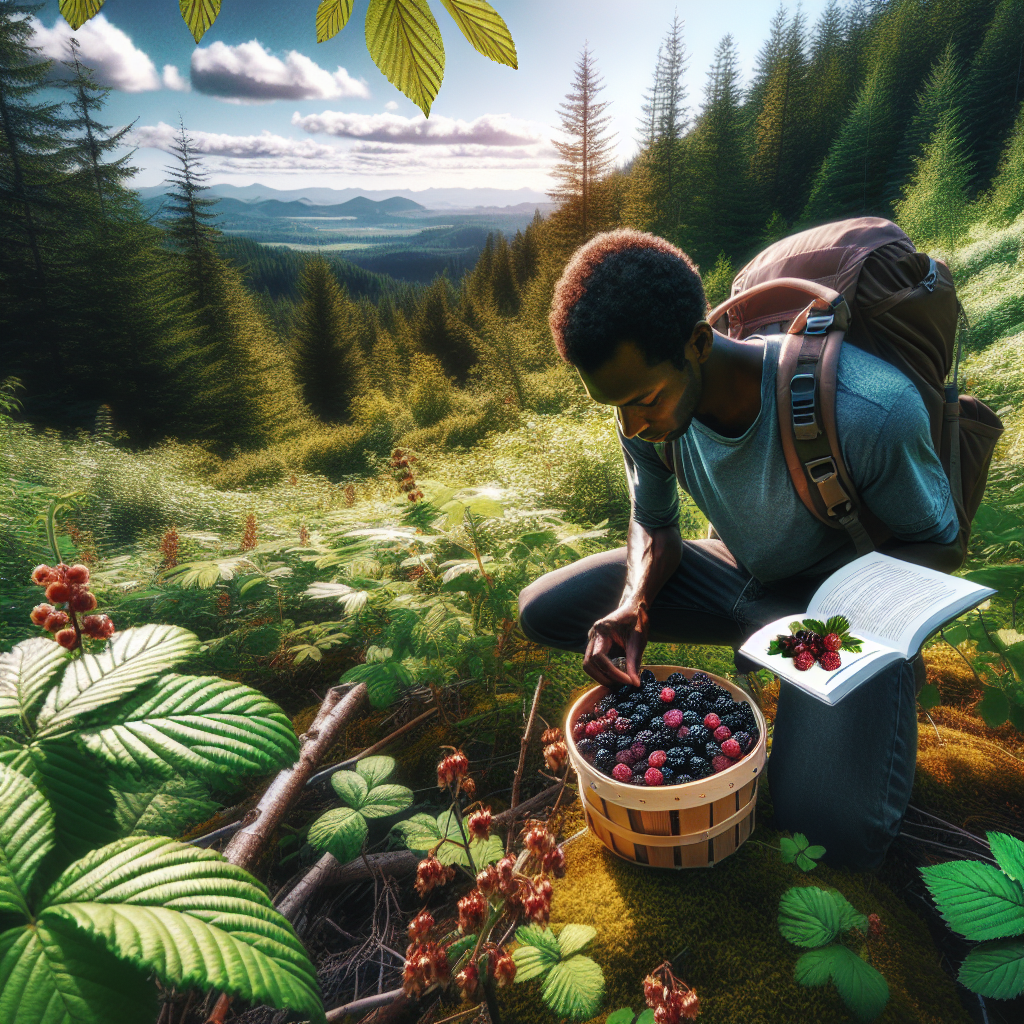Title: A Local’s Guide to Foraging for Wild Berries in Oregon Safely
Knowing the Berries
Foraging for wild berries in Oregon can be a wholesome and rewarding activity—but only when pursued with knowledge and respect. Knowing how to differentiate between huckleberries, blackberries, thimbleberries, and the less friendly snow berries or poison oak is key. A wise forager takes the time to learn what is safe to eat and what isn’t. The Timber Press Guide to Berries of the Pacific Northwest, available at Powell’s City of Books in downtown Portland, is a local favorite for this very purpose.
When to Forage
The foraging season largely dictates which berries will be ready for plucking. A quick tip – when Mt. Hood is clear from clouds, it usually means that marionberries are ripe. Locals know that blackberries, a favorite among many, tend to be ripe for picking from late July through August. Striking a balance between patience and timing is crucial.
Where to Forage

While Oregon is home to a variety of wild berries, where you look greatly determines what you’ll find. Huckleberries, a beloved local treat, can be found aplenty in the Mt. Hood National Forest. A hike on the Pacific Crest Trail or the Timberline Trail can often double as a fruitful foraging trip. A little west, near the Portland area, Himalayan blackberries abound in Forest Park—yet it’s a wise idea to avoid the bustling Wildwood Trail and its often-overpicked offerings.
Coastal Foraging
If you find yourself on the Oregon Coast, use caution. The coastal weather changes quickly in the afternoon, so start early and dress in layers. One would think that the lush surroundings of Siuslaw National Forest would be filled with berry delights. However, it’s a place to tread carefully as poison oak is not uncommon. Alternatively, a stroll along the Cape Perpetua Scenic Byway can yield a surprising array of salmonberries—and a stunning coastal view to match.
Foraging Etiquette
Ensuring nature remains as untouched as possible should always be at the forefront of a forager’s mind. Oregonians are proud of their lands and we all have a responsibility to protect them. Avoid trampling vegetation, scattering litter or damaging berry bushes. Even if a thicket of blackberries at Tryon Creek State Natural Area looks tempting, remember to only take what you need. Leave some behind for the local wildlife and the fellow berry foragers who may come after you.
Safety Comes First
Foraging isn’t without its risks. Be aware of your surroundings. Places like Silver Falls State Park are also home to wildlife, including coyotes and the occasional black bear. If you discover an untouched berry paradise in the backwoods of the Rogue River-Siskiyou National Forest, odds are there’s a reason the local fauna hasn’t devoured this bounty… yet. So be sure to look around before you settle in for a pick. Carry a whistle, bear spray, and always let someone know where you are going.
While foraging, remember to stay hydrated and bring along some high-protein snacks from the local Sahalie Snacks located in Portland. It’s generally wise to wear long pants and sturdy shoes to fend off brambles, bugs, and West Cascades poison oak.
Determining if a berry is safe to eat or not can be tricky—when in doubt, leave it out. Symptoms of eating a toxic berry include nausea, vomiting, and stomach cramps. If you’ve eaten a berry and you’re unsure if it’s safe, seek medical attention immediately.
Making Foraging Fun
Foraging can be a delightful way to spend time outdoors and learn more about Oregon’s abundant biodiversity. Take the time to appreciate the gorgeous vistas of Columbia River Gorge or the serene woods in Willamette National Forest as you search for berries. Who knows, you might stumble upon a patch of plump Oregon grape!
Finding your berries is only half the fun. Bring your wild harvest home and try your hand at a traditional Marionberry pie or some blackberry jam—nothing tastes better than something you’ve worked for and picked yourself!
Remember, foraging in Oregon is more than a hobby—it’s a way to connect with the land and experience a time-honored tradition that reaches back to Oregon’s pioneer days. You’re part of this continuum, a seeker joining generations of foragers who’ve learned to appreciate and respect the bounty of our great state.
So, pack up your bags, lace up your boots, and go forth to explore the berry-laden woods and groves of Oregon with knowledge and love for the environment. With these insider tips, your foraging adventure is bound to be a safe and fruitful one. Happy berry hunting in the beautiful Beaver State!
